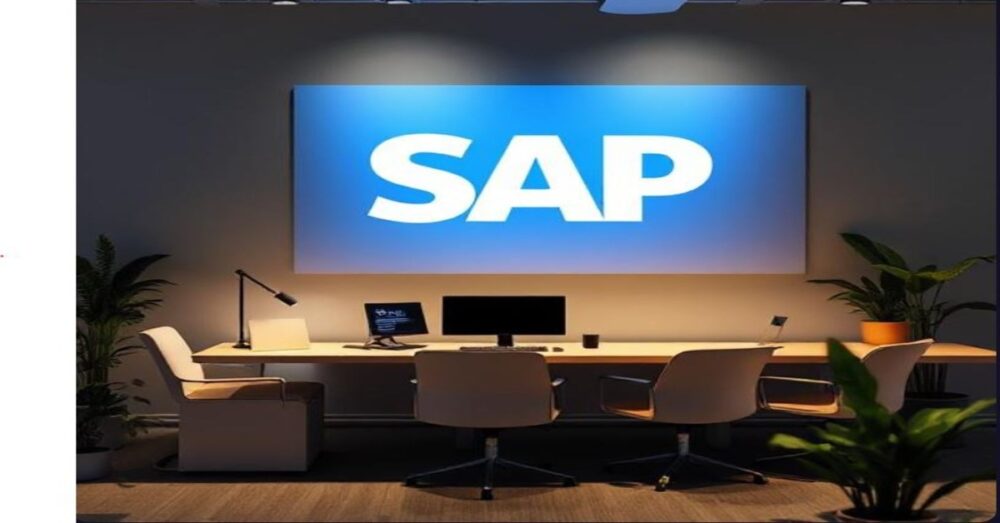
SAP S/4HANA Implementation Project: A Complete Guide
Introduction
In today’s fast-paced digital economy, businesses are under pressure to become more agile, data-driven, and customer-focused. Traditional ERP systems often fall short in delivering the speed and flexibility modern enterprises demand. That’s where SAP S/4HANA comes in — SAP’s next-generation ERP suite that transforms how businesses operate by leveraging in-memory computing, real-time analytics, and simplified processes.
But let’s be honest: implementing SAP S/4HANA isn’t a walk in the park. It’s not just about installing software; it’s about reimagining business processes, retraining people, migrating massive amounts of data, and ensuring that day-to-day operations continue smoothly during the transition. In other words, an SAP S/4HANA implementation project is both a technological upgrade and a business transformation journey.
Why does this matter? Because getting it right can mean a significant boost in efficiency, reduced costs, and a competitive edge in your industry. Getting it wrong, however, can result in delays, wasted budgets, and frustrated employees.
This guide will take you through everything you need to know about an SAP S/4HANA implementation project — from the basics and methodologies to challenges, costs, and best practices. Whether you’re an IT manager, consultant, or business leader, this article will serve as your roadmap.
Understanding SAP S/4HANA
Before diving deep into the implementation journey, it’s crucial to understand what SAP S/4HANA actually is and why it has become the backbone of digital transformation for thousands of companies worldwide.
Evolution from SAP ECC to S/4HANA
For decades, organizations relied on SAP ECC (ERP Central Component) to run their business processes. ECC was powerful but came with limitations — complex data structures, slower reporting, and heavy reliance on batch processing.
To overcome these challenges, SAP introduced S/4HANA in 2015, built on the SAP HANA in-memory database. Unlike traditional databases, HANA processes data in real-time, enabling businesses to analyze and act on information instantly. This was a game-changer — reports that once took hours could now be generated in seconds.
Core Features of S/4HANA

SAP S/4HANA is not just a technical upgrade; it’s a reimagined ERP system with features that reshape business operations:
- Real-time analytics – Access insights instantly without waiting for data to be processed overnight.
- Simplified data model – Reduces data redundancy by consolidating tables and structures.
- Intuitive user experience with SAP Fiori – Replaces the old SAP GUI with a modern, mobile-friendly interface.
- Integration with advanced technologies – AI, machine learning, IoT, and blockchain seamlessly integrate with business processes.
- Deployment flexibility – Available on-premise, in the cloud, or as a hybrid model.
On-Premise vs. Cloud Deployment
Organizations can choose how they want to deploy SAP S/4HANA based on their needs:
- On-Premise – Full control, customizable, but requires higher infrastructure and maintenance costs.
- Cloud – Faster implementation, subscription-based, and lower upfront costs, but less customizable.
- Hybrid – Combines both models, giving businesses flexibility while still maintaining control of critical systems.
In short, SAP S/4HANA isn’t just software — it’s a strategic platform that helps companies run more efficiently, make better decisions, and stay ahead in a competitive marketplace.
Importance of SAP S/4HANA Implementation Projects
When companies decide to implement SAP S/4HANA, they aren’t just upgrading their ERP system — they are investing in a business transformation initiative. The importance of such projects cannot be overstated, as they directly influence how an organization operates, serves customers, and grows in the long term.
Business Transformation Benefits
At its core, an SAP S/4HANA implementation project is about redefining business processes. By moving away from outdated systems, organizations can:
- Streamline operations – Remove redundant processes and standardize workflows across departments.
- Gain real-time visibility – Decision-makers no longer wait for month-end reports; they can act instantly.
- Enhance customer experience – With accurate, real-time data, businesses can respond faster to customer needs.
- Reduce costs – Automation and process optimization cut unnecessary expenses.
- Improve compliance – Built-in tools help meet regulatory requirements with greater accuracy.
Imagine it this way: if your business were a car, implementing SAP S/4HANA is like replacing an old diesel engine with a modern electric one — smoother, faster, and more efficient.
Competitive Advantages
Companies that complete their SAP S/4HANA projects successfully often enjoy significant competitive advantages:
- Speed to market – Faster product launches with integrated supply chain and production planning.
- Data-driven decisions – Managers rely on predictive analytics rather than gut feelings.
- Scalability – As the business grows, the system scales seamlessly without disruptions.
- Innovation readiness – Businesses can adopt AI, IoT, and cloud technologies much more easily.
Real-World Adoption Trends
SAP has set a deadline for end of mainstream maintenance for SAP ECC in 2027, meaning businesses need to migrate to S/4HANA sooner or later. This deadline has accelerated adoption across industries:
- Manufacturing – Companies use S/4HANA to optimize supply chains and production planning.
- Retail – Real-time inventory management ensures smoother customer experiences.
- Healthcare – Integrated systems improve patient care and operational efficiency.
- Banking and finance – Enhanced compliance and risk management tools are critical in highly regulated industries.
Types of SAP S/4HANA Implementations
Not all businesses start their SAP S/4HANA journey the same way. The path chosen depends on the organization’s existing IT landscape, budget, and long-term goals. SAP generally recognizes three main approaches: Greenfield, Brownfield, and Hybrid implementations.
Greenfield Implementation
A Greenfield implementation is like building a brand-new house on an empty plot of land. Organizations start fresh, without carrying forward the complexities of their old ERP systems.
Key characteristics:
- Fresh installation of SAP S/4HANA.
- Processes are redesigned from the ground up.
- Legacy data may be migrated selectively (not everything is carried forward).
Advantages:
- Opportunity to eliminate old, inefficient processes.
- Faster adoption of best practices and SAP standard processes.
- Clean data foundation with no “baggage” from outdated systems.
Challenges:
- Higher cost and time commitment compared to other methods.
- Requires significant change management, as employees adapt to new processes.
Best suited for:
Companies with outdated or highly customized legacy systems that want a fresh start and are willing to invest in complete transformation.
Brownfield Implementation
A Brownfield implementation is more like renovating your old house instead of demolishing it. Companies convert their existing SAP ECC system to S/4HANA while keeping much of the existing structure intact.
Key characteristics:
- System conversion of existing SAP ERP to S/4HANA.
- Existing processes and configurations are largely preserved.
- Gradual transformation with minimal disruption.
Advantages:
- Faster and less expensive compared to Greenfield.
- Familiar processes for employees, reducing resistance to change.
- Lower training requirements since core processes remain the same.
Challenges:
- Risk of carrying forward inefficiencies or unnecessary customizations.
- Data cleansing becomes critical to avoid “garbage in, garbage out.”
Best suited for:
Organizations that are already running SAP ECC efficiently and want a smooth transition without rebuilding everything from scratch.
Hybrid Implementation
A Hybrid implementation is exactly what it sounds like — a mix of both Greenfield and Brownfield approaches. Companies may retain some existing systems while redesigning specific processes in S/4HANA.
Key characteristics:
- Combination of system conversion and fresh installation.
- Selective transformation of business processes.
- Often used in large enterprises with complex IT landscapes.
Advantages:
- Balance between cost, speed, and flexibility.
- Opportunity to modernize critical areas while keeping stable processes intact.
- Lower risk compared to full Greenfield.
Challenges:
- Complexity of managing both old and new environments.
- Requires strong governance to avoid duplication and confusion.
Best suited for:
Large enterprises with multiple business units, where some areas benefit from a fresh start while others only need incremental upgrades
Key Phases of SAP S/4HANA Implementation
An SAP S/4HANA implementation project isn’t a one-time task. It’s a structured journey that involves careful planning, execution, and follow-up. SAP recommends the SAP Activate Methodology, which provides a proven framework for implementation. While every project is unique, the journey typically follows these seven phases:
Phase 1: Preparation and Planning
This is where the foundation is laid. A strong start determines whether the project succeeds or struggles later.
Key activities:
- Define project goals, scope, and KPIs.
- Identify key stakeholders and form the project team.
- Select implementation partners (system integrators/consultants).
- Create a high-level roadmap and budget.
Think of this as designing the blueprint of a house before construction begins. Without it, everything else can collapse.
Phase 2: Business Process Design

Once planning is complete, the focus shifts to designing how the business will run on SAP S/4HANA.
Key activities:
- Analyze existing processes (AS-IS).
- Define target processes (TO-BE) aligned with SAP best practices.
- Identify process gaps and areas for customization.
The goal is not just to replicate old processes but to reimagine them. For example, companies may replace manual approval chains with automated workflows in S/4HANA.
Phase 3: System Installation and Configuration
At this stage, the actual system setup begins.
Key activities:
- Install SAP S/4HANA (on-premise or cloud).
- Configure system modules based on business requirements.
- Integrate with other enterprise systems (CRM, HR, etc.).
- Develop custom applications if required.
This is where the technical consultants (Basis, developers, integration experts) do the heavy lifting.
Phase 4: Data Migration
Data is the lifeblood of any ERP system. Migrating it from legacy systems to S/4HANA is one of the most critical — and challenging — tasks.
Key activities:
- Extract, clean, and validate legacy data.
- Use tools like SAP Data Services and SAP S/4HANA Migration Cockpit.
- Ensure data integrity and accuracy during transfer.
Phase 5: Testing
No implementation is complete without thorough testing.
Types of testing:
- Unit testing – Verifying individual components.
- Integration testing – Ensuring different modules work together.
- User acceptance testing (UAT) – End-users test whether the system supports daily tasks.
- Performance testing – Validating speed, scalability, and stability.
Testing helps identify issues early, saving time and money post go-live.
Phase 6: Training and Change Management
Even the best ERP system fails if employees don’t know how to use it. Training and change management are therefore critical.
Key activities:
- Conduct role-based training sessions using SAP Learning Hub or in-house programs.
- Provide hands-on practice environments (sandbox systems).
- Communicate the benefits of S/4HANA to reduce resistance.
Change management is about winning hearts and minds. If employees see the system as a burden, adoption will fail.
Phase 7: Go-Live and Support
This is the big day when the organization switches from its old system to SAP S/4HANA.
Key activities:
- Execute the cutover plan (switch from legacy to new system).
- Monitor system performance closely.
- Provide hypercare support for users in the initial weeks.
- Establish long-term support and continuous improvement plans.
Go-live is often compared to a rocket launch: years of preparation, but success depends on those critical first moments.
Stakeholders in SAP S/4HANA Projects

An SAP S/4HANA implementation project isn’t just an IT task — it’s a full-scale organizational initiative. Success depends on the collaboration of multiple stakeholders, each playing a unique role in the transformation journey. Think of it like a symphony: every instrument matters, and harmony comes only when everyone plays their part.
Executive Leadership
At the top, executive sponsors and C-level leaders provide vision, funding, and governance.
Responsibilities:
- Define strategic goals for the implementation.
- Approve budgets and allocate resources.
- Act as champions of change, driving buy-in across the organization.
Without strong executive support, projects often stall due to lack of direction or prioritization.
Project Managers
Project managers are the orchestrators of the entire initiative. They ensure that deadlines are met, risks are managed, and stakeholders remain aligned.
Responsibilities:
- Create and maintain project plans.
- Coordinate between technical and functional teams.
- Monitor progress, risks, and deliverables.
- Report updates to leadership and stakeholders.
In many cases, having an experienced project manager can be the difference between smooth execution and chaos.
Functional Consultants
Functional consultants are the process experts who translate business requirements into SAP configurations.
Responsibilities:
- Work with business users to gather requirements.
- Configure S/4HANA modules (Finance, Sales, Procurement, Manufacturing, etc.).
- Ensure the system supports daily operations effectively.
- Conduct functional testing and provide knowledge transfer to users.
They act as a bridge between business teams and technical specialists.
Technical Consultants
While functional consultants focus on business processes, technical consultants handle the system backbone.
Responsibilities:
- Install, configure, and maintain the S/4HANA environment.
- Develop custom programs, reports, and interfaces (ABAP, Fiori).
- Manage data migration, integration, and performance optimization.
- Ensure security, compliance, and system scalability.
Without their expertise, the “engine” of S/4HANA would never run smoothly.
End Users
Last but certainly not least are the end users — employees who will use SAP S/4HANA daily. Their acceptance determines whether the project achieves its goals.
Responsibilities:
- Participate in user acceptance testing (UAT).
- Provide feedback on usability and performance.
- Attend training sessions and adapt to new processes.
Engaging end users early helps reduce resistance and builds confidence in the new system.
Why Stakeholder Collaboration Matters
A successful SAP project is not about technology alone — it’s about people. Every stakeholder must align with the same vision: transforming the business. When leaders provide direction, managers coordinate, consultants deliver, and users adopt — the project achieves lasting success.
Tools and Methodologies for Implementation
Implementing SAP S/4HANA is a complex endeavor, and without the right methodology, projects can easily go off track. SAP provides structured frameworks, while project managers leverage proven methodologies and tools to keep everything under control. Let’s break them down.
SAP Activate Methodology
The SAP Activate Methodology is SAP’s official implementation framework. It’s designed to speed up deployment while reducing risks.
Key elements of SAP Activate:
Guided Configuration – Predefined content and best practices for faster setup.
Ready-to-Run Processes – Industry-specific templates to accelerate process design.
Agile Project Management – Encourages flexibility and iterative progress.
Phases of SAP Activate:
Discover – Assess readiness, explore solutions, and create a business case.
Prepare – Build the project plan, finalize scope, and set up governance.
Explore – Run workshops, design target processes, and identify gaps.
Realize – Configure the system, migrate data, and perform testing.
Deploy – Cutover, go-live, and transition to support.
Run – Ongoing operations and continuous improvement.
SAP Activate is like a navigation system for the entire implementation — guiding organizations step by step to their destination.
Agile vs. Waterfall in SAP Projects
Traditionally, ERP implementations followed the Waterfall model, where phases were executed sequentially. While structured, it often led to long timelines and rigid outcomes.
Waterfall Approach
Linear, step-by-step execution.
Suitable for projects with well-defined requirements.
Limited flexibility if scope changes mid-project.
Agile Approach
Iterative development with short sprints.
Early delivery of functional components.
Continuous feedback from users.
Higher adaptability in dynamic business environments.
Modern SAP projects increasingly favor Agile or Hybrid Agile-Waterfall models, balancing flexibility with structure.
Project Management Tools
Managing a large SAP S/4HANA implementation requires powerful tools to monitor progress, track issues, and align teams.
Some widely used tools include:
- SAP Solution Manager (SolMan) – SAP’s own tool for managing implementations, testing, and monitoring.
- Jira – Popular for Agile project tracking and sprint management.
- Microsoft Project – Traditional tool for timeline and resource management.
- Asana / Trello – Lighter, user-friendly tools for team collaboration.
The right tool depends on the company’s project culture — some prefer detailed Gantt charts, while others thrive with Kanban boards.
Why Methodologies and Tools Matter
Without a structured methodology like SAP Activate and supporting project tools, SAP implementations risk becoming chaotic. They provide clarity, enforce discipline, and ensure that both IT teams and business users are aligned throughout the journey.
Data Migration in SAP S/4HANA

When we talk about an SAP S/4HANA implementation project, one of the most critical (and often underestimated) aspects is data migration. Think of it as moving into a new house — if you bring along all the clutter, broken furniture, and unnecessary items, your shiny new home will feel just as messy as the old one. Similarly, migrating bad or irrelevant data to S/4HANA can undermine the entire project.
Why Data Migration Matters
Data is the lifeblood of an ERP system. If the information in S/4HANA isn’t accurate, complete, and reliable, decision-making, reporting, and business processes will suffer. A successful migration ensures:
- Data accuracy – Clean, validated, and error-free records.
- Consistency – Standardized formats across systems and departments.
- Efficiency – Eliminating duplicate, obsolete, or irrelevant data.
- Compliance – Adhering to legal and industry regulations.
Key Steps in Data Migration
A structured migration process typically includes the following phases:
- Data Assessment
- Identify existing data sources (legacy systems, databases, spreadsheets).
- Evaluate data quality and gaps.
- Define the scope of data to be migrated (master data, transactional data, configuration data).
- Data Cleansing & Transformation
- Standardize formats (e.g., date, currency, address formats).
- Remove duplicates and irrelevant entries.
- Map legacy data to new S/4HANA data structures.
- Data Loading
- Use tools like SAP Migration Cockpit or SAP Data Services.
- Load data into S/4HANA in predefined templates.
- Validate with test loads before full migration.
- Data Validation & Testing
- Compare source vs. target data to confirm accuracy.
- Run functional tests to ensure migrated data supports business processes.
- Go-Live Migration & Cutover
- Freeze legacy system updates during final migration.
- Perform full load into S/4HANA.
- Conduct reconciliation to verify completeness.
SAP Tools for Data Migration
SAP provides several tools to make migration smoother:
- SAP S/4HANA Migration Cockpit – Preconfigured templates for loading master and transactional data.
- SAP Data Services (BODS) – Advanced ETL (Extract, Transform, Load) tool for complex scenarios.
- LTMC (Legacy Transfer Migration Cockpit) – User-friendly interface for data upload.
- SAP Rapid Data Migration – Pre-built content for common data objects.
These tools act like a moving company — handling your data with care so it arrives safely in the new system.
Common Challenges in Data Migration
Despite best efforts, organizations often stumble during data migration. Common pitfalls include:
- Poor data quality – Garbage in, garbage out.
- Incomplete mapping – Legacy structures don’t match new S/4HANA fields.
- Time pressure – Rushed migrations often lead to errors.
- Lack of testing – Insufficient test cycles create issues post go-live.
- Business disruptions – Data freeze periods can impact operations.
The key to overcoming these is early planning, thorough cleansing, and multiple rounds of validation.
Best Practices for Data Migration
Start data preparation early — don’t wait until the Realize phase.
Involve business users in validating data quality.
Migrate only what’s necessary — don’t clutter the new system.
Automate wherever possible using SAP tools.
Run multiple mock migrations to minimize surprises at go-live.
Customization vs. Standardization in S/4HANA Projects
One of the biggest debates in any SAP S/4HANA implementation project is: Should we stick to SAP’s standard best practices, or should we customize the system to match our unique business processes?
This is a balancing act. Too much customization can lead to a complex, expensive system that’s hard to maintain. Too much standardization may force the business to change processes that are actually competitive advantages.
What is Standardization?
Standardization means adopting SAP’s out-of-the-box best practices and processes with little or no modification.
Benefits of Standardization:
- Faster implementation (less development work).
- Lower cost of ownership.
- Easier upgrades and compatibility with future SAP releases.
- Leverages SAP’s proven industry best practices.
Drawbacks:
- May require significant process changes in the business.
- Users might resist adapting to new ways of working.
- Not ideal if the business relies on unique processes for differentiation.
What is Customization?
Customization refers to modifying the SAP system to fit a company’s existing or specialized processes. This could involve:
- Custom ABAP programs.
- Enhancements to standard SAP functionalities.
- New reports, interfaces, or workflows.
- Adjustments to Fiori apps.
Benefits of Customization:
Benefits of Customization:
- Aligns with existing business processes.
- Enhances user adoption (familiar workflows).
- Supports industry- or company-specific requirements.
Drawbacks:
- Higher cost and longer timelines.
- Increased complexity in testing and maintenance.
- Potential issues during upgrades.
Finding the Right Balance
The truth lies somewhere in the middle. Most organizations adopt a “fit-to-standard” approach, where they first explore how SAP’s standard best practices align with their needs. Only when a critical business requirement cannot be met with standard processes, customization is considered.
Think of it like renovating a house: you move into a modern home (SAP best practices). You may redecorate certain rooms (customization) to match your lifestyle, but you wouldn’t rebuild the foundation unless absolutely necessary
Examples of When to Customize vs. Standardize
Standardize:
- Financial accounting processes (common globally).
- Procurement workflows (unless highly specialized).
- Inventory management.
Customize:
- Industry-specific compliance processes.
- Unique customer service workflows.
- Proprietary product costing methods.
Best Practices for Customization Decisions
Always start with SAP best practices.
Conduct fit-gap analysis during the Explore phase.
Involve business and IT stakeholders in customization decisions.
Document customizations thoroughly for future upgrades.
Keep customizations minimal and strategic.
Key Takeaway
Over-customization is a common reason why ERP projects fail. By following a “standard first, customize only when essential” strategy, businesses can achieve both efficiency and flexibility.
Integration with Other Systems
An SAP S/4HANA implementation project doesn’t exist in isolation. Modern enterprises run a variety of applications — CRM systems, HR platforms, supply chain solutions, third-party apps, and even legacy systems. For S/4HANA to deliver its full value, it must seamlessly integrate with these surrounding systems.
Why Integration Matters
Integration is like building highways between cities. Without them, information stays trapped in silos, slowing down business operations. A well-integrated S/4HANA ensures:
- Real-time data exchange across systems.
- Process continuity between departments and applications.
- Improved decision-making with unified data.
- Reduced manual work and fewer errors.
Types of Integrations in S/4HANA
SAP-to-SAP Integration
Example: Connecting S/4HANA with SAP SuccessFactors for HR or SAP Ariba for procurement.
These are often preconfigured, making them smoother and faster.
SAP-to-Non-SAP Integration
- Example: Connecting Salesforce CRM with S/4HANA for customer data synchronization.
- Requires more effort but is crucial in hybrid IT environments.
Cloud and On-Premise Integration
- Many businesses run hybrid models, so integration between S/4HANA Cloud and on-premise applications is essential.
Integration Tools and Technologies
SAP provides powerful tools and platforms for connecting systems:
- SAP Cloud Platform Integration (CPI)
Cloud-based middleware for integrating S/4HANA with other cloud or on-premise systems. - SAP Process Orchestration (PO)
Used for on-premise integration and process automation. - APIs and OData Services
SAP S/4HANA exposes APIs for developers to build custom integrations. - IDocs and RFCs
Traditional methods still used for connecting legacy systems.
These tools act as the “plumbing” that keeps data flowing smoothly across systems.
Common Integration Scenarios
Finance & HR – Payroll data flows from SuccessFactors to S/4HANA Finance.
Procurement & Suppliers – Purchase orders pass from S/4HANA to Ariba and confirmations flow back.
Sales & CRM – Opportunities from Salesforce sync with S/4HANA’s order management.
Supply Chain – Real-time logistics tracking with external warehouse or transport management systems.
Challenges in Integration
Integration sounds simple on paper but comes with hurdles:
- Data Inconsistencies – Different systems use different formats.
- Latency Issues – Real-time integration requires robust infrastructure.
- Security Risks – Sensitive data must be protected during exchange.
- Complexity – Multiple systems create a web of dependencies.
Best Practices for Successful Integration

Define integration requirements early in the Explore phase.
Use SAP-provided standard connectors whenever possible.
Establish robust monitoring to detect and fix integration failures quickly.
Prioritize security and compliance (encryption, access control).
Keep integrations simple — avoid building overly complex interfaces unless necessary.
Key Takeaway
Integration ensures that S/4HANA doesn’t operate as a standalone system but as the central nervous system of the enterprise. With the right tools and strategies, businesses can achieve real-time visibility and seamless operations across their entire digital landscape.
